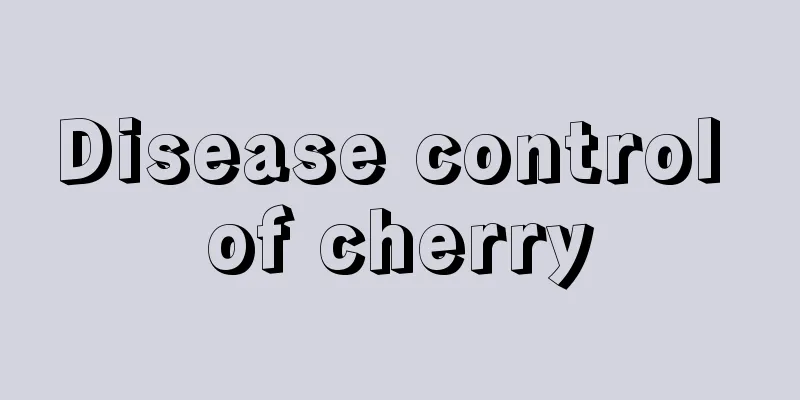Disease control of cherry

Prevention and control of cherry gummosisIn order to fully understand the prevention and control methods of hairy cherry gummosis, we must first start from its root cause and fully understand the cause of hairy cherry gummosis. Only by knowing ourselves and the enemy can we achieve victory in all battles. The most common cause of hairy cherry gummosis is frost damage, including frostbite of hairy cherry caused by cold, and frost damage and hail damage from natural disasters. The direct cause of these two is also frost damage. The larger the hail and frost, the lower the outdoor temperature, which will cause the gummosis of hairy cherry. Another very important factor is that in the breeding process, too much or too little water or too much or too little fertilizer will cause hairy cherry to suffer from gummosis. Therefore, the prevention and control methods are relatively simple. In normal times, we should strengthen water and fertilizer management, remember to keep the hairy cherry warm in cold weather, and concentrate on maintenance to easily prevent the gummosis of hairy cherry. Prevention and control of hairy cherry leaf blightLeaf blight is a very common disease among plants, not only in hairy cherries, but also in other plant groups. Leaf blight is not easy to be detected in the early stage of the disease, and is often noticed by people in the middle stage of the disease. In the early stage of leaf blight, there will be small brown spots on the leaves of hairy cherries, which are scattered and relatively light in color. In the middle stage, the spots on the leaves of hairy cherries will become larger and larger, and the color will become very different, from the initial brown to a darker reddish brown, and begin to have a tendency to connect into one piece. In the later stage, large spots are connected together, and eventually the entire leaf will fall off. The prevention and control methods include picking out diseased leaves for treatment in winter, spraying appropriate medicines in spring to prevent the growth of pathogens, and strengthening water and fertilizer management to improve the immunity of the hairy cherry itself. Finally, if you really get this disease, there is no need to panic, just spray it with medicine immediately, and it will be fine in less than a month. |
<<: Check out the five fungicides commonly used in flowers
>>: A complete list of causes of flower diseases!
Recommend
As long as you dare to grow these 7 kinds of flowers, they will grow explosively and 100 flower pots will not be enough!
Phoenix The Phoenix is also called the Fallen R...
What to do if Clivia doesn't grow leaves
reason Reason 1 One of the reasons why Clivia doe...
How to behead old succulent plants to control their shape
1. Prepare tools The tool used for beheading shou...
How often should I water the four-season begonia? How many days should I water it?
How often should I water the Begonia? Begonia is ...
What to do if succulent ruby turns into water
First step observation When faced with a succulen...
How to take care of the newly bought Hawaiian coconut
1. How to care for the newly bought Hawaiian coco...
These 5 kinds of flowers are only suitable for cuttings in summer. If you miss them, you’ll have to wait another year!
Milan 1. Select the new tender branches that have...
Is it good to cultivate fish in water with Chinese evergreen?
1. Is it good to raise fish? There is no problem ...
When is the best time to prune Kalanchoe?
Kalanchoe pruning time The Kalanchoe can be prune...
When and how to repot spider plants
Chlorophytum repotting time It is recommended to ...
How to grow purple violet
1. Soil Purple violet is suitable for growing in ...
How to plant Clivia seeds
1. Choose the seed Choose healthy and plump seeds...
When and how to transplant orange trees The best time to transplant orange seedlings
Orange trees can be transplanted in spring before...
You must eat it in summer to clear away heat and relieve summer heat. Get rid of those air-conditioning and popsicles!
Melon: Winter melon It is said that "eat spr...
How to propagate the royal poinciana
Seed propagation of royal poinciana In December, ...









